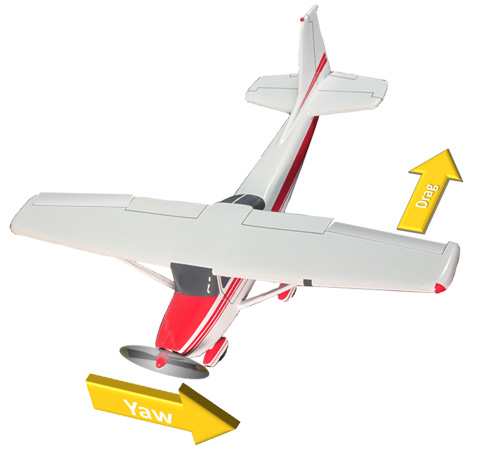|
The wing drop starts
at the 10 seconds mark and at 12 seconds the student cranks the
ailerons to the right. Had the student simply released
back pressure on the yoke instead of turning it,
followed by a power reduction, the
spin entry would have never occurred.
 |
Wing drops
occur frequently during stalls, usually the
result of improper rudder use, propeller torque,
and spiraling slipstream - the usual suspects
for left turning tendencies. Proper use of
rudder provides induced roll motion and can
easily counter these effects.
As the left
wing dropped, a yaw to the left was induced.
Since the airplane was stalled, this yaw started
the entry into the incipient spin phase. The
pilot's reaction of applying opposite aileron
did the opposite of what he intended. Turbulent
air over the top of the wing reduced the
effectiveness of the up aileron on the right
side. But the down aileron on the left was
extended into unstalled air and created
additional drag further exacerbating the yawing
motion. Additionally, the increased angle of
attack on the outboard half of the left wing
deepened the stall on that side accelerating the
wing drop.
There was
no snap roll associated with this event and yaw
was still minimal. All that was required was to
reduce power to idle, neutralize the ailerons
and elevator,
and add opposite rudder to halt further yawing
motion.
The
takeaway from this one is to use rudder to level
wings during stall practice, not ailerons. |
To learn more
about the aerodynamics of stalls and spins, view the
lesson entitled
Stalls, Spins, and Spirals at the Gold Seal Online
Ground School.
|

